Here in the Northern Hemisphere, we’re quickly approaching December 21st, the shortest day of the year. And while winter hasn’t reared its ugly head nearly as ferociously as it has in years past, these frozen days and seemingly endless nights can really start to get to you.
But despair not. I’m here to give you a creative antidote to combat the cold, dark malaise of the season: Frozen Christmas luminaries.
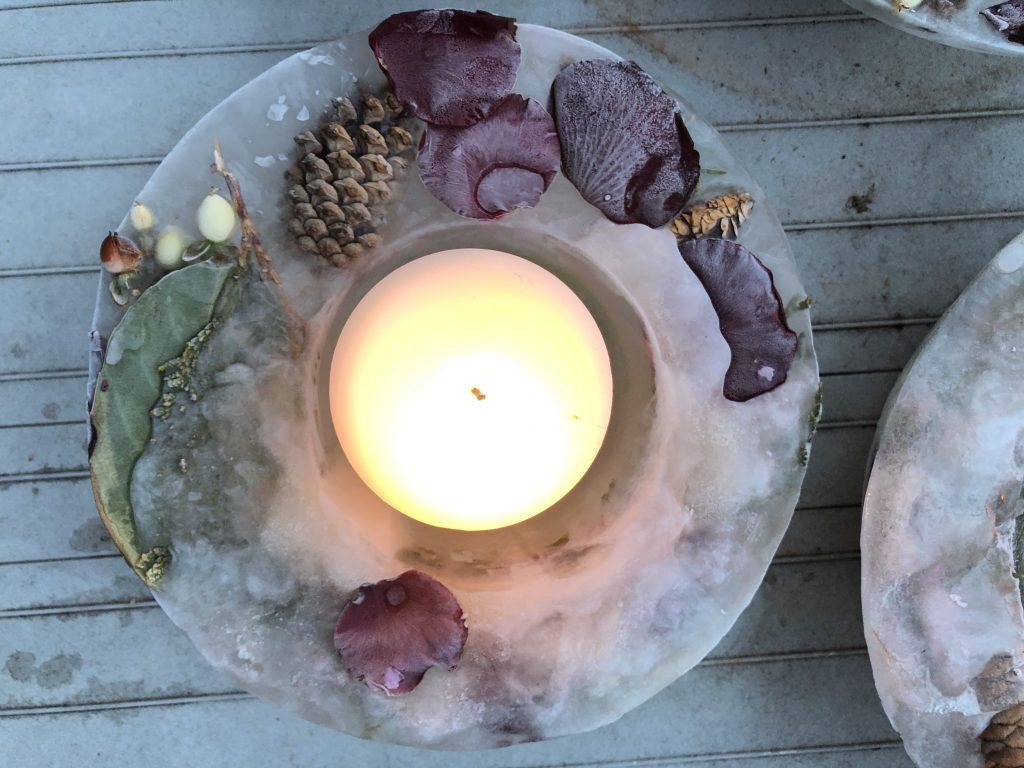
Fire is deeply elemental: It emits a palpable sense of spark and connection and inevitably reminds us of our roots. Amidst the dead of winter, fire—particularly in the form of candles— adds grace, vibrancy, and luminosity to any space, emanating warmth and providing hope even on the darkest of days. Often associated with grand celestial bodies, luminaries are a particular type of candle that radiate warmth, transmit natural light, and evoke a deep sense of tradition. From mini bonfires once constructed of pine boughs to delicate paper lanterns, luminaries take on many different forms and date back to various times and cultures, but all share one thing in common: They are intended to fantastically glow and—both literally and figuratively—light the way.
Using two natural resources they have in ample supply—fire and ice—the Nordic luminary tradition combines opposing elements to create a brilliantly serene, illuminating effect. These “ice candles” originated in Finland and were once used to honor gravesites and mark the shoreline for fishermen but have since evolved into merry, decorative ways to celebrate life’s many occasions. During winter’s harshest days, the Finns only experience approximately five hours of daylight, and they thus use ice candles to spread joy, welcome visitors, and inject a glimmer of warmth into the darkest season of the year. Indeed, these lanterns trace back to the observance of Winter Solstice, the Norse feast of Juul[1] and the Christmas Yuletide and have since become part of modern Scandinavian holiday traditions.
In addition to their organic beauty, I find ice luminaries particularly compelling because of their inherent resourcefulness and relative easiness to make. To create your own festive lantern, all you need is water, a pair of containers (one being smaller than the other), some duct tape[2], and below freezing temperatures. And, if you’re feeling particularly fancy, you can also add any combination of decorations to beautify your frozen creation[3].
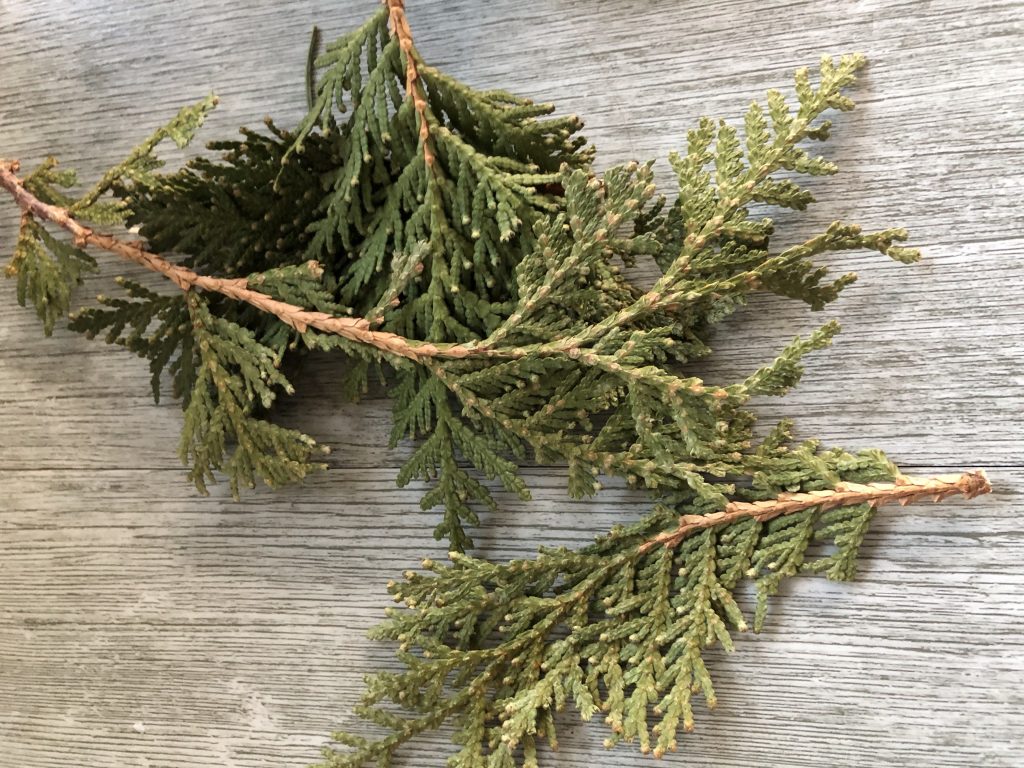
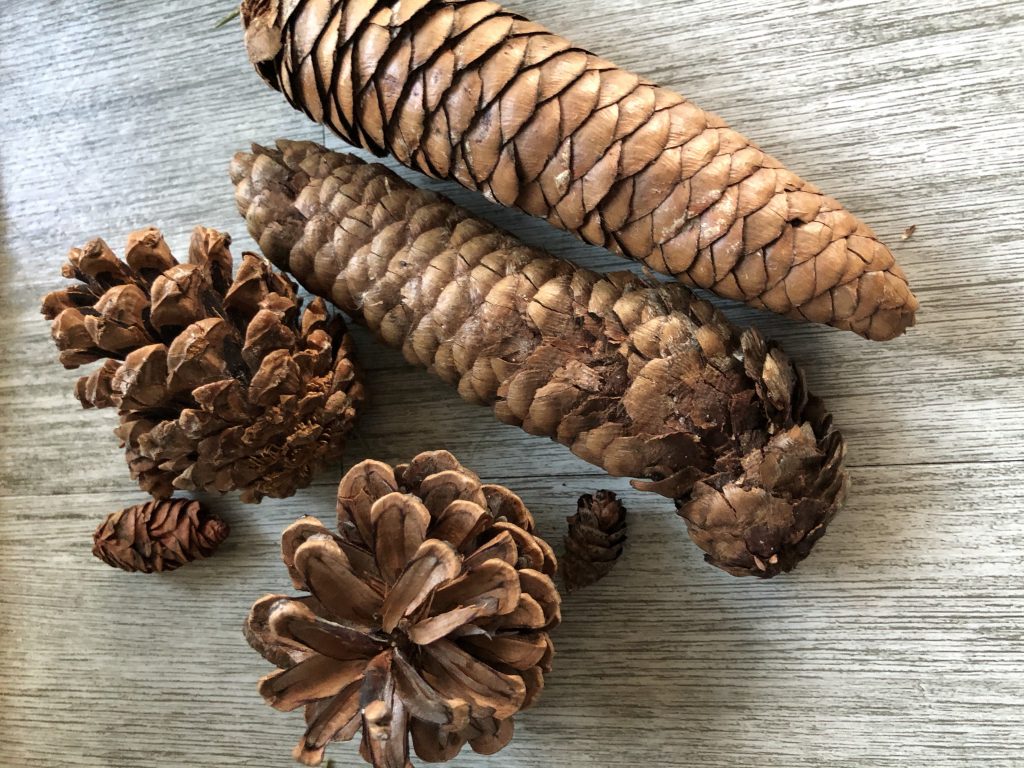
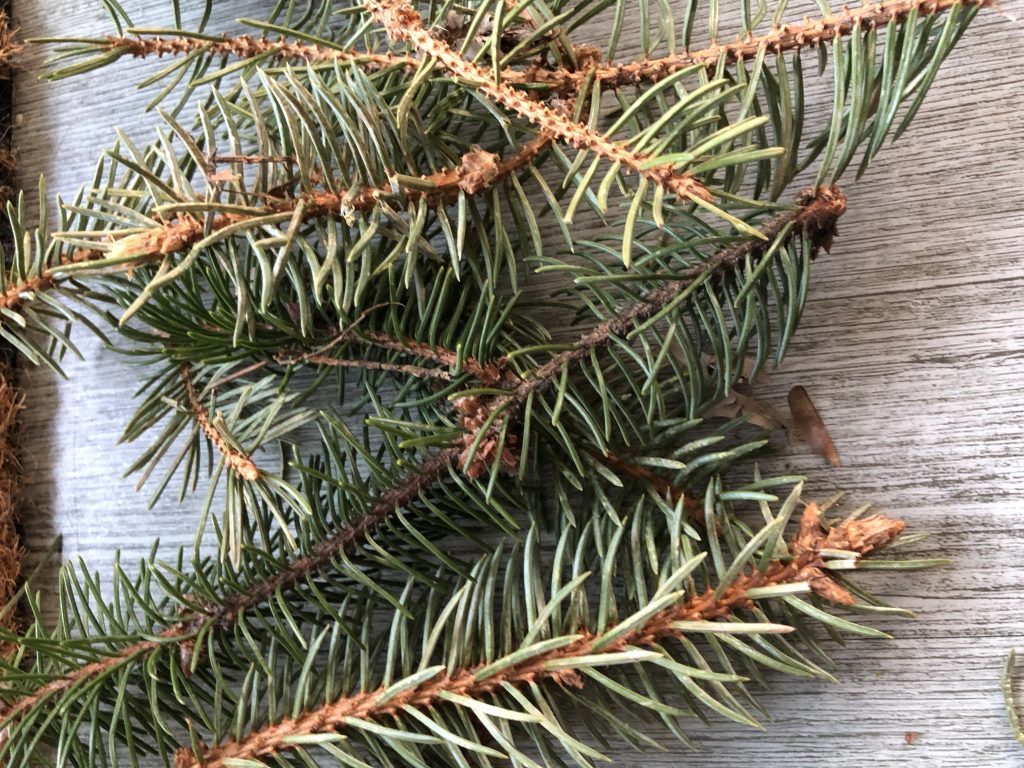
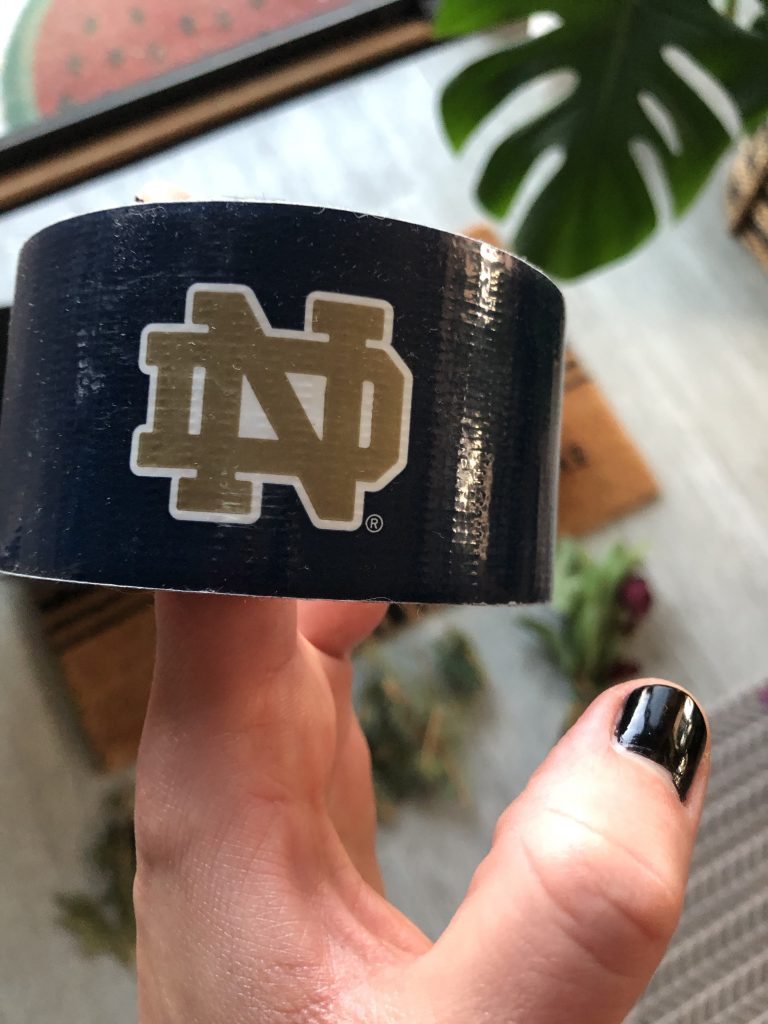
Many people use differently-sized plastic mixing buckets you can readily find at a hardware store, but to create my luminaries I used a set of nesting mixing bowls because that’s what I had lying around. Remember, size is key when choosing your vessel: Your smaller container must be large enough to accommodate the candle you wish to use. With this simple design constraint in mind, the world is truly your oyster.
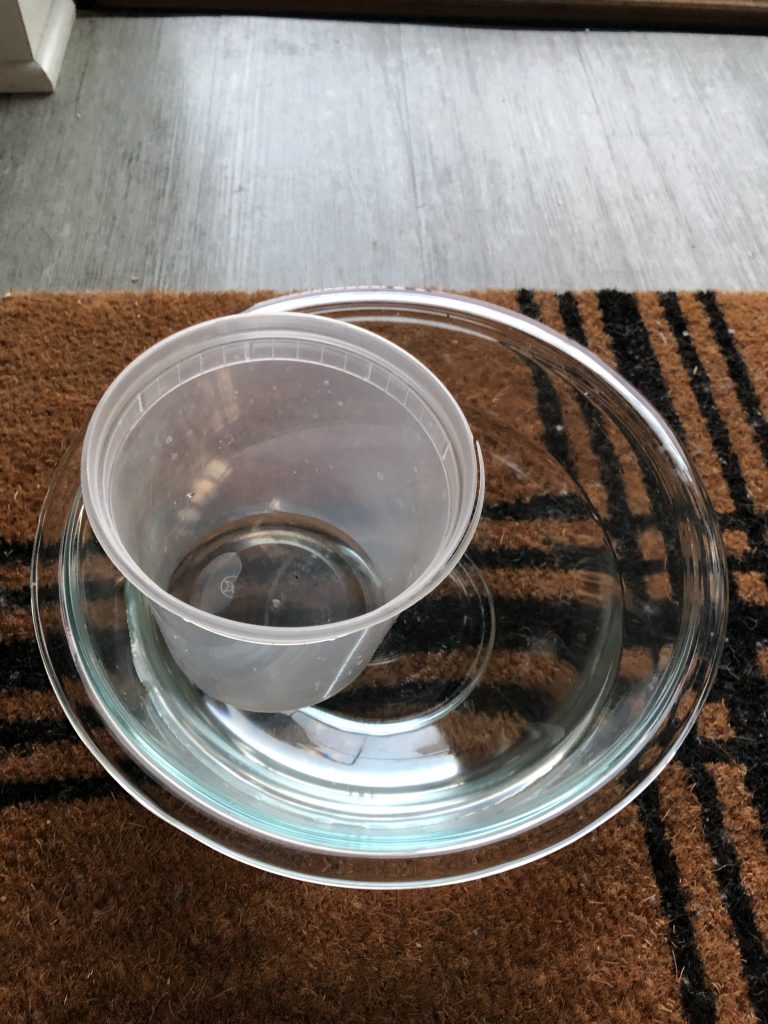
Once you’ve gathered your supplies, build your vessel by placing the smaller bowl at the base of the larger one, and secure it by forming a “+” sign with two pieces of duct tape. I recommend applying extra pressure where the tape hits the surface of the smaller container to ensure that the smaller vessel doesn’t become impossibly buoyant when you add water. Which brings us to your next step…
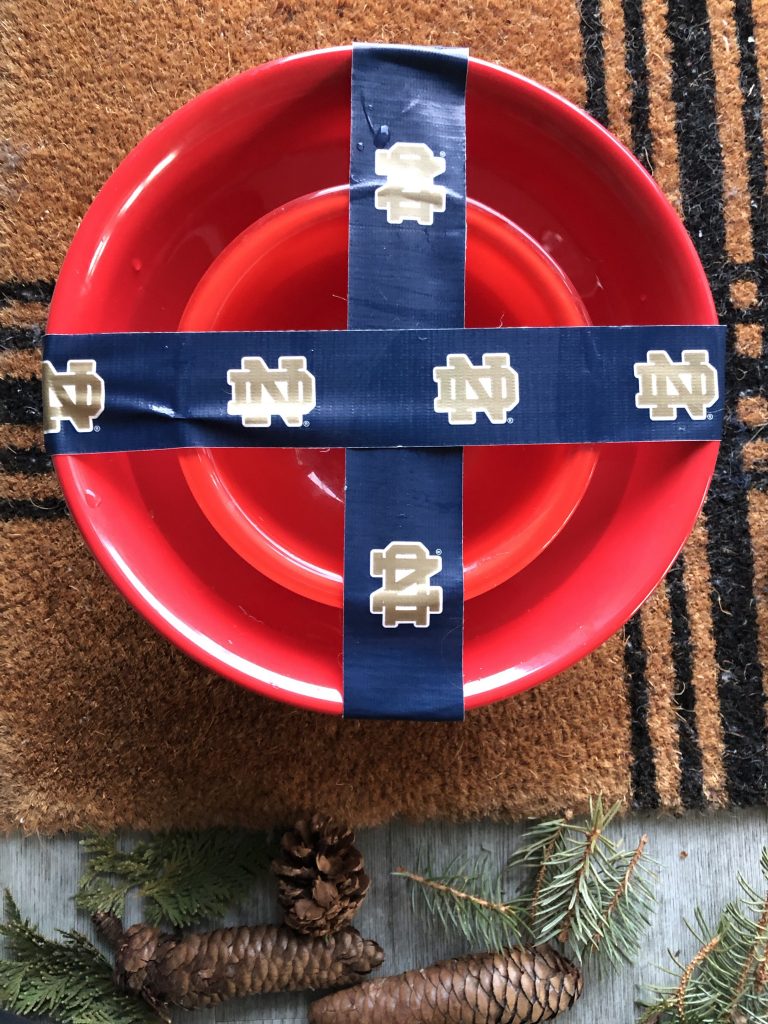
…Add water to the large container, making sure to leave the smaller container dry. If you plan to add festive decorations to your ice luminary, then I recommend leaving an inch or two of extra space so your container does not overflow.
Once you’ve added your water, it’s time to decorate! There’s no specific approach or best practice here: Simply take the items you’ve assembled and add them to the water in a way that appeals to you. I added little tufts of pine, spruce, and pinecones—all gathered from my daily walks—around the perimeter of the nesting bowls, making sure to vary my decorations around the entirety of the structure. Wanting to add a merry pop of Christmas red, I even incorporated an old flower arrangement I had intentionally saved from Thanksgiving for this very purpose. The aging rose petals added a brilliant, dynamic effect to my project, and I particularly recommend anything that similarly embodies this festive holiday spirit.
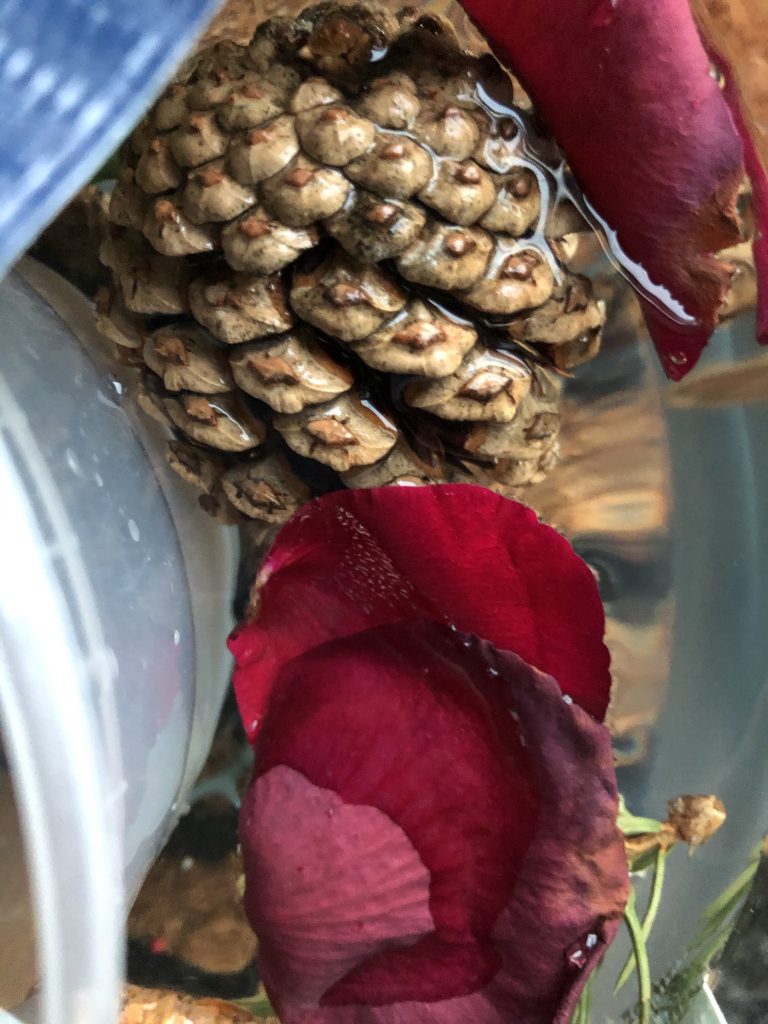
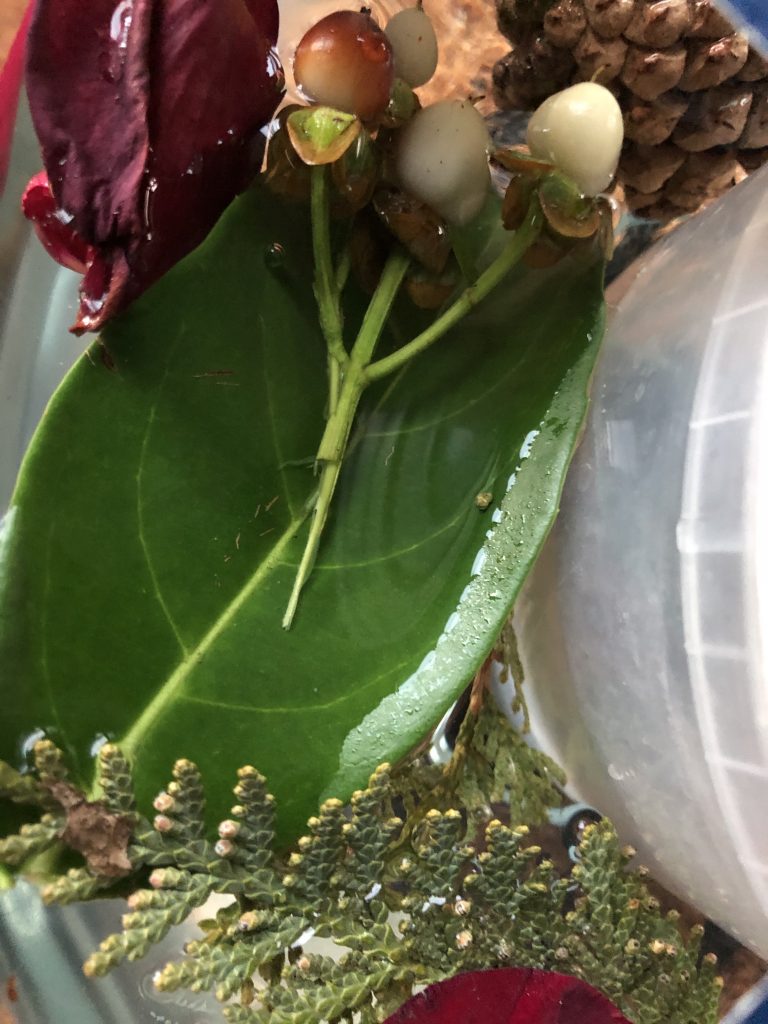
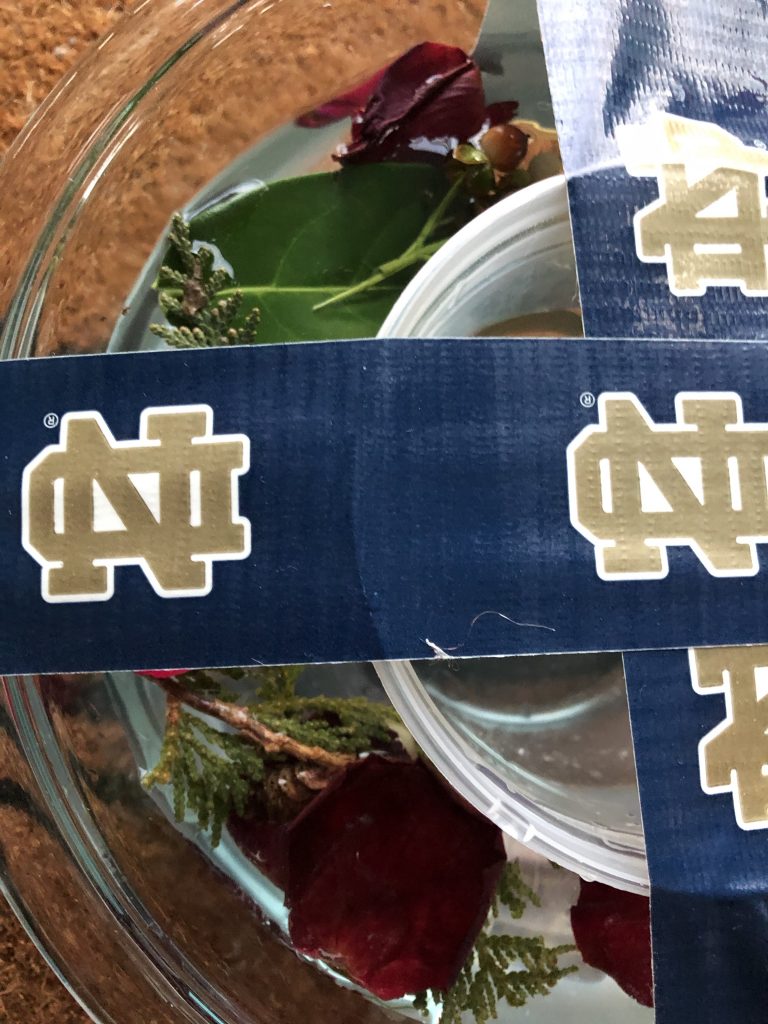
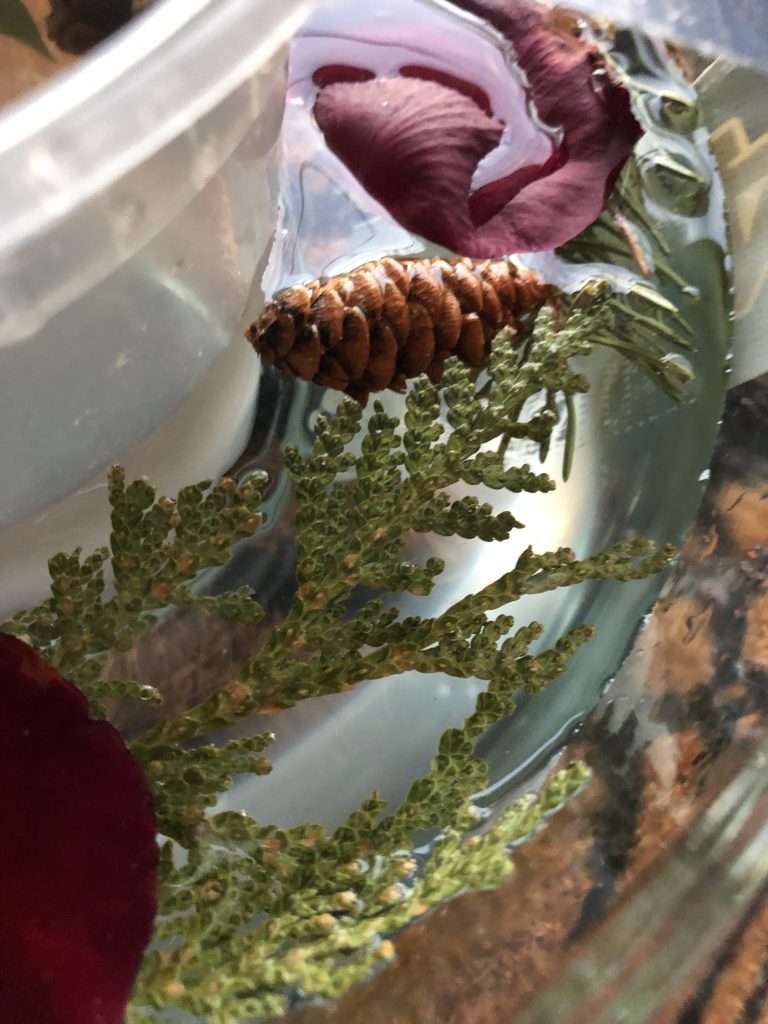
Once you’re satisfied with your design, it’s time to freeze your lantern. Because this week has been unseasonably warm by Minnesota standards[4], I cleared space in the freezer so my luminaries could properly solidify from the comfort of the (indoor) frozen tundra. Regardless if you choose natural or man-made freezing techniques, I suggest you let your luminaries solidify overnight to avoid any errant air pockets or half-frozen messes.
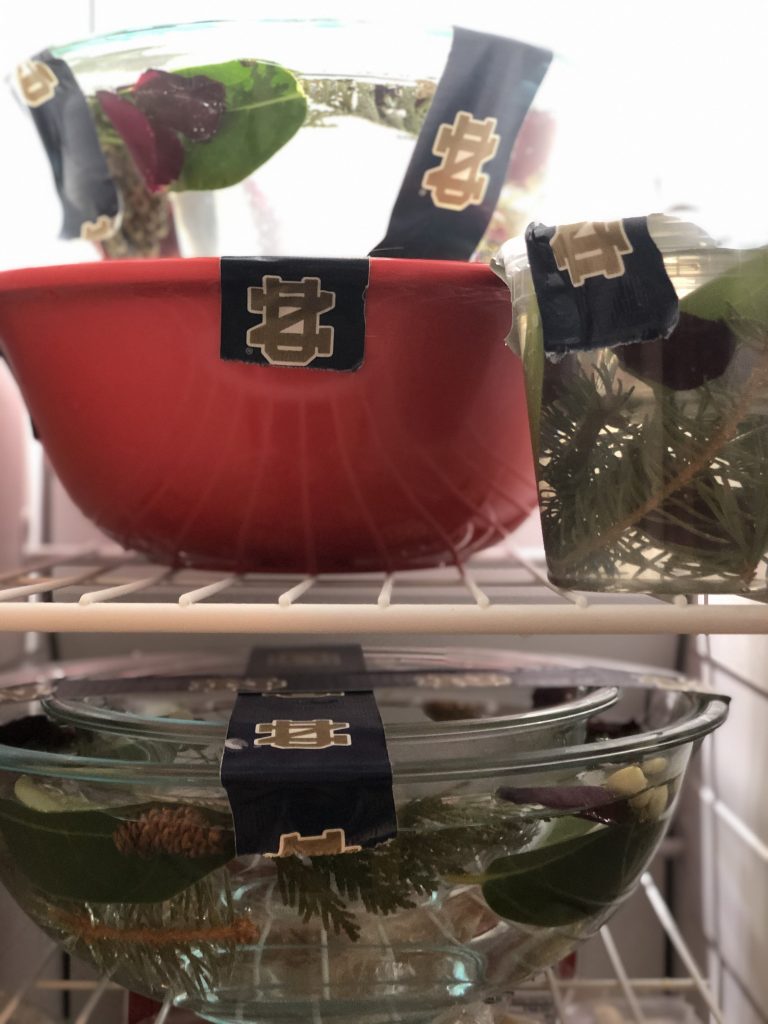
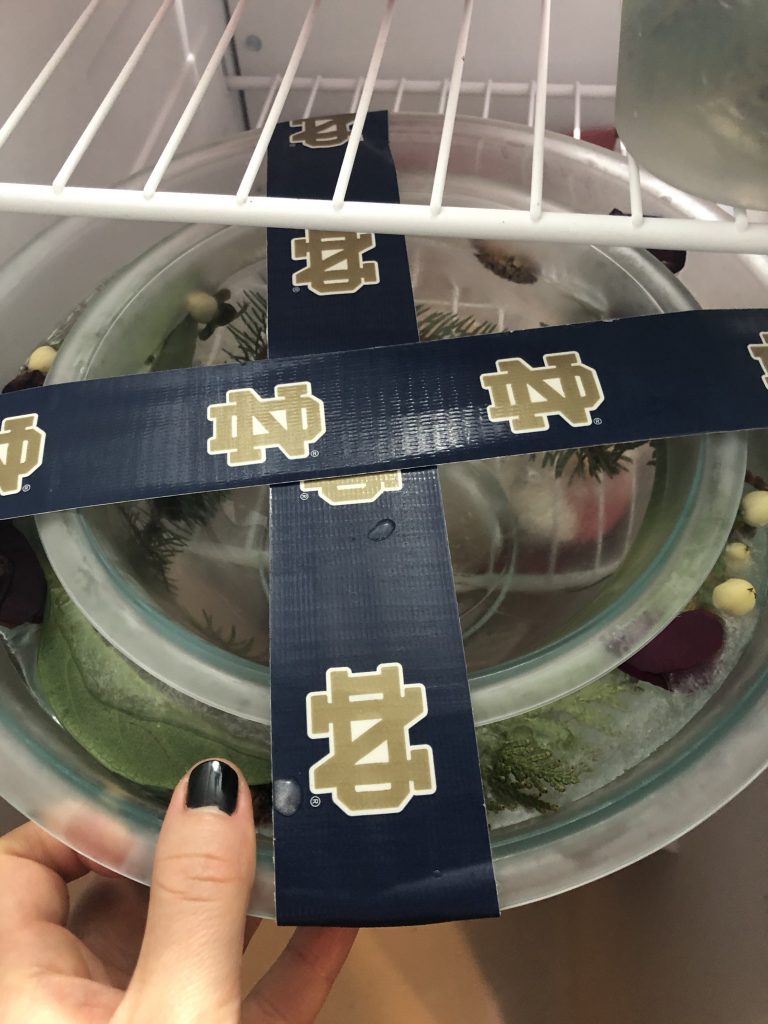
Waking up the night after you’ve created ice lanterns is almost like waking up on Christmas morning… Almost. I can say from experience that the excitement is palpable and the lack of patience is very, very real. Once you’ve channeled your inner grasshopper, carefully remove your frozen vessel from the freezer, and slowly run the ice under hot water to loosen it from its container. You should hear an audible “crack!” signifying you’re a-okay to flip the lantern over and release it from its receptacle. Be cautious here. As a PSA remember ice is slippery[5], so make sure you don’t accidentally break your newly frozen masterpiece!
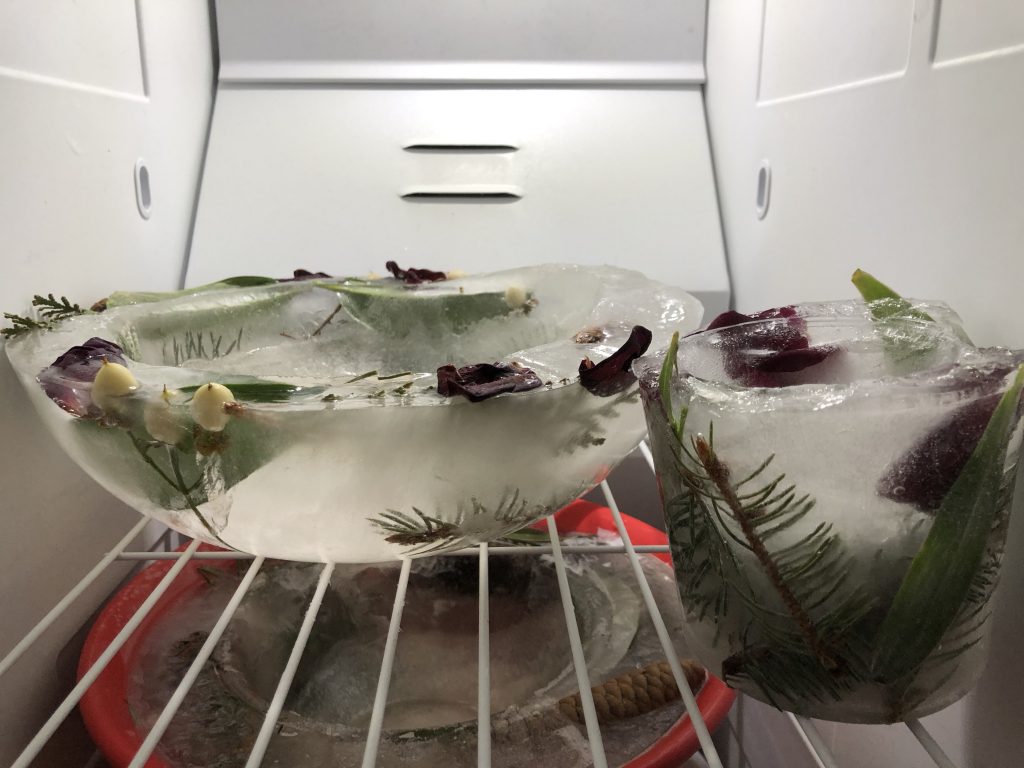
Now that your ice luminary has been liberated, you’re free to add your candle and any other relevant decorations that bring your creation to life. Once it’s finished, use your lantern as a festive table decoration[6], or adopt the Scandinavian tradition and bring your ice candle outside to illuminate your driveway, walkway, or deck and spread cheer to all who pass by. Like a hurricane lantern, the ice vessel protects the flame from harsh seasonal winds. Pair this with winter’s frigid temps, and your luminary is guaranteed to live on and spread light well into the new year.
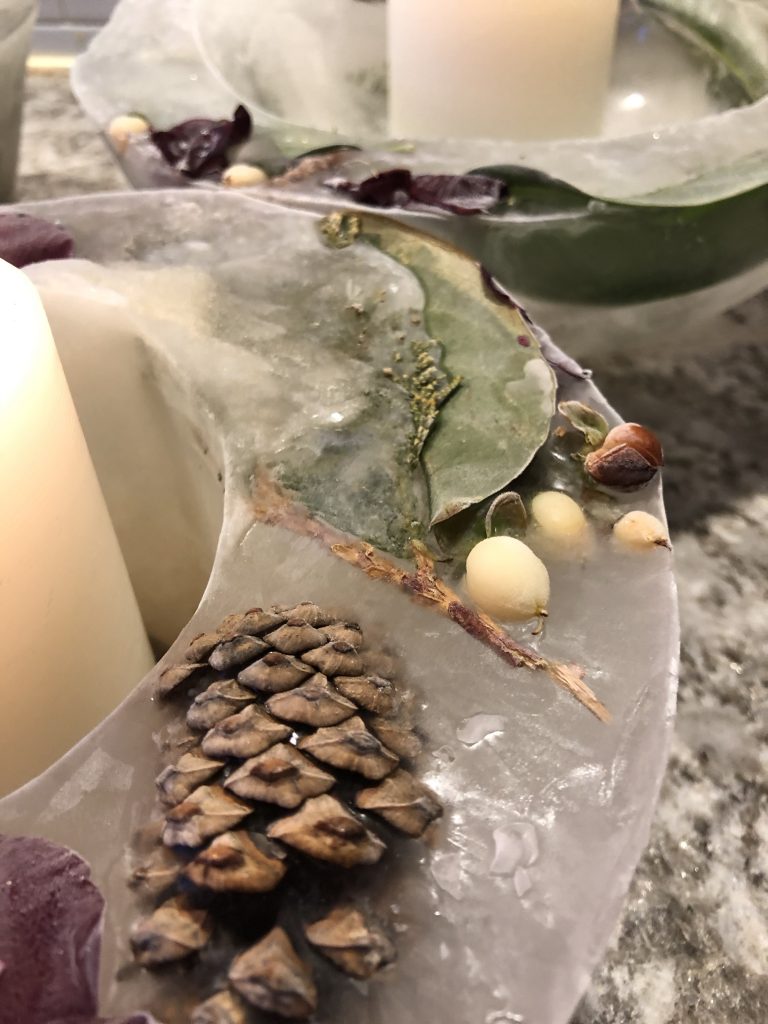
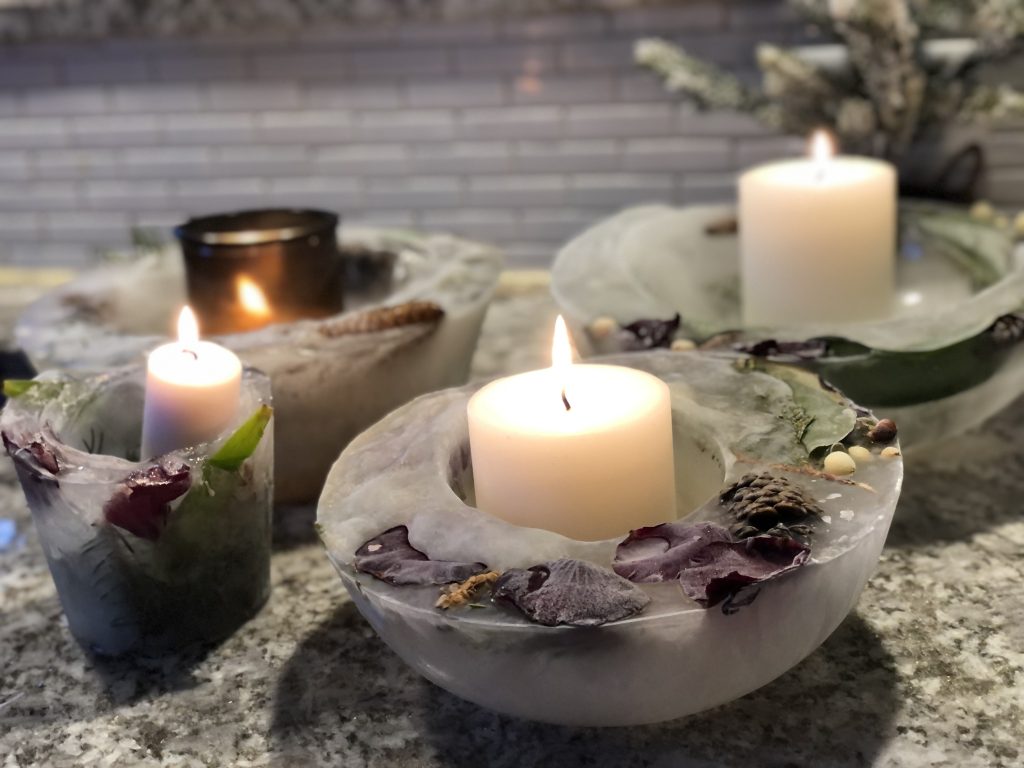
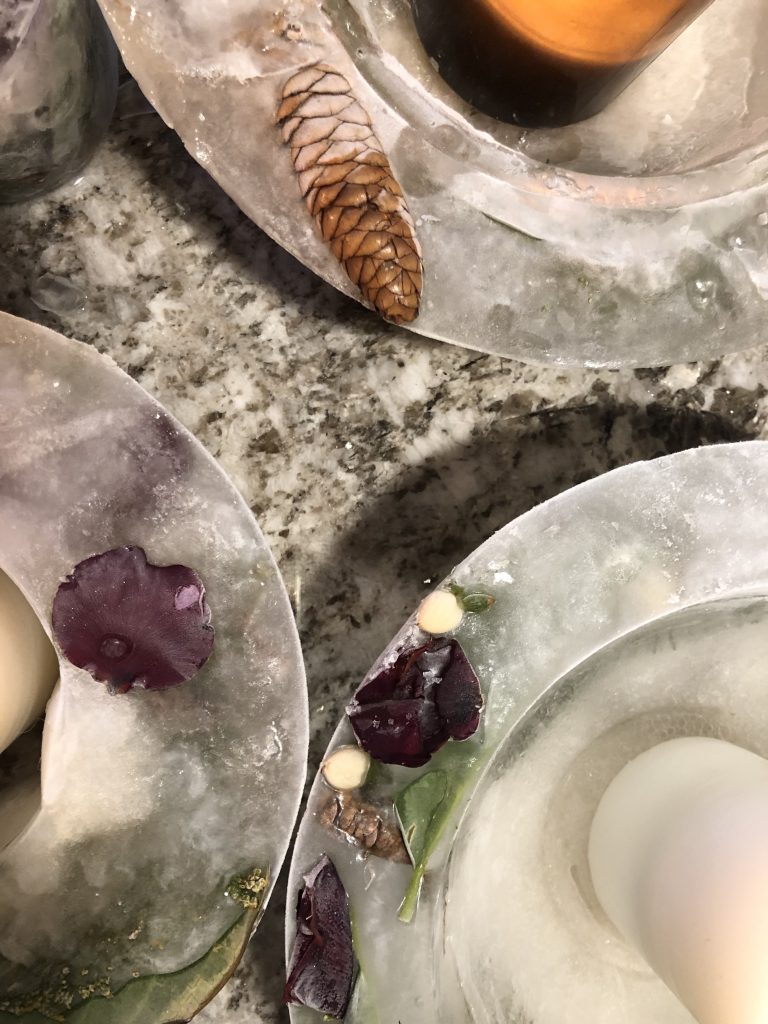
Perhaps nothing is more powerful than light. Light symbolizes knowledge, energy, creativity, and hope. But most of all, light represents life; it represents tenacity, vivacity, and a deep gritty willingness to endure. Light provides a beacon of solace that interrupts the expansive ink-black, “navy blue” skies of winter. It is a glimmer of courage, a profound exclamation that says to the world, “I am here. I am unafraid. And not only will I live on, but I will radiate my warmth and energy for the benefit of others.”
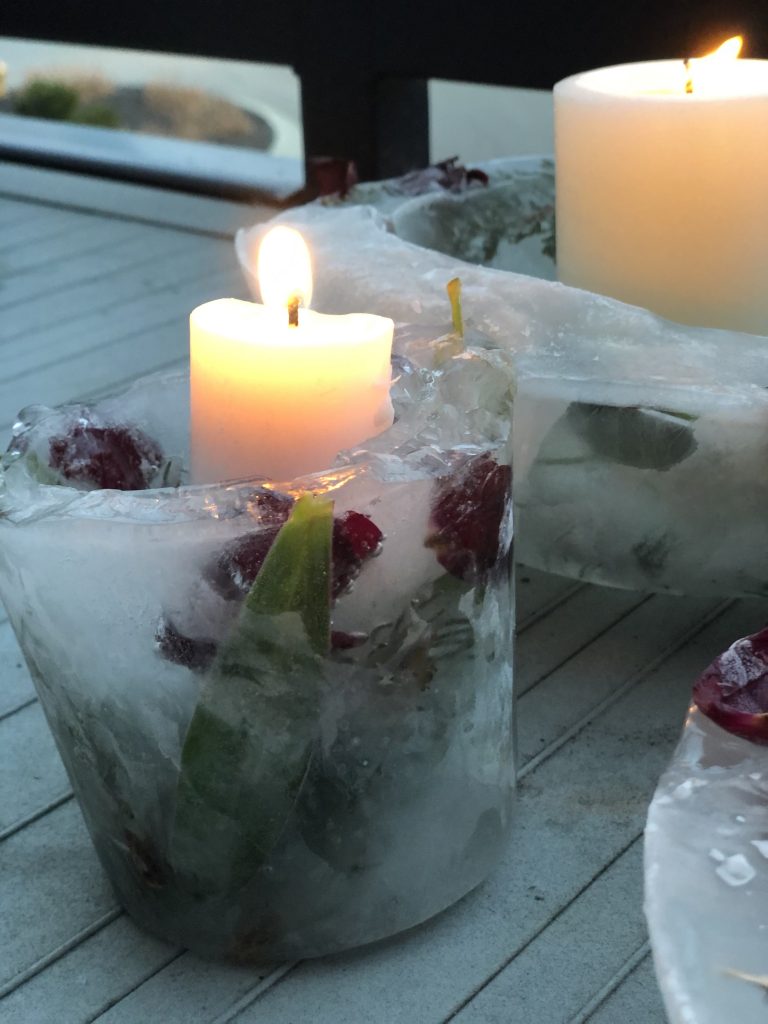
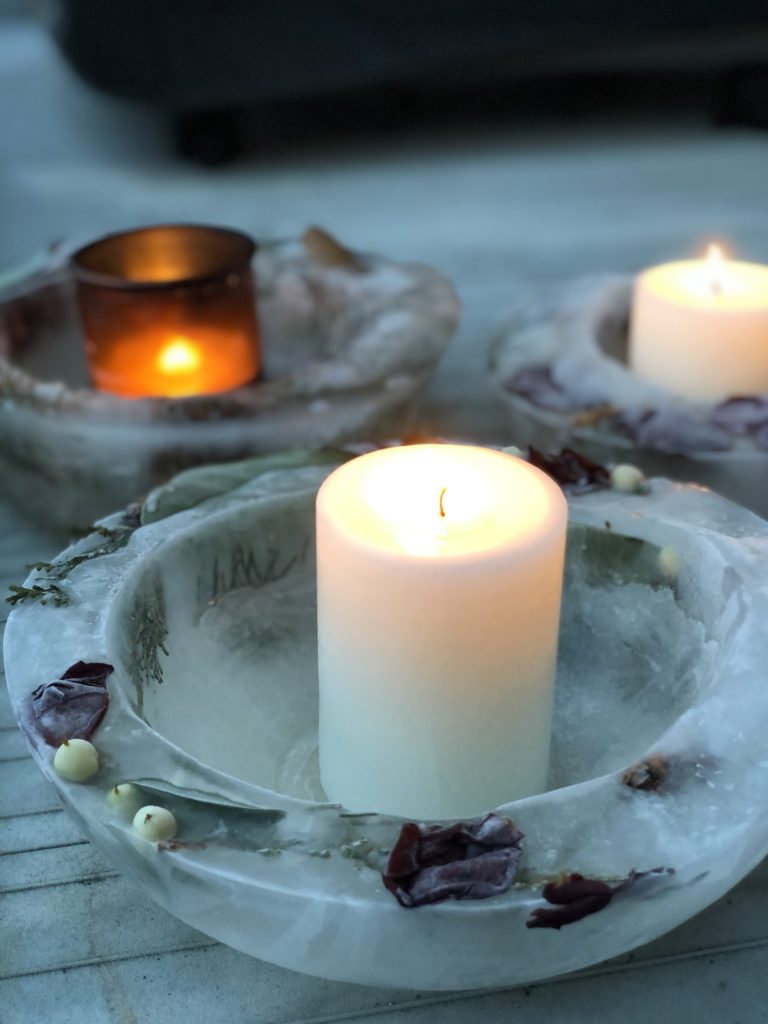
How will you radiate warmth and energy this Christmas
season? How will you serve as a luminescent
beacon for the benefit of others? How
might you cultivate the light within you to cut through the darkness and guide
the way?
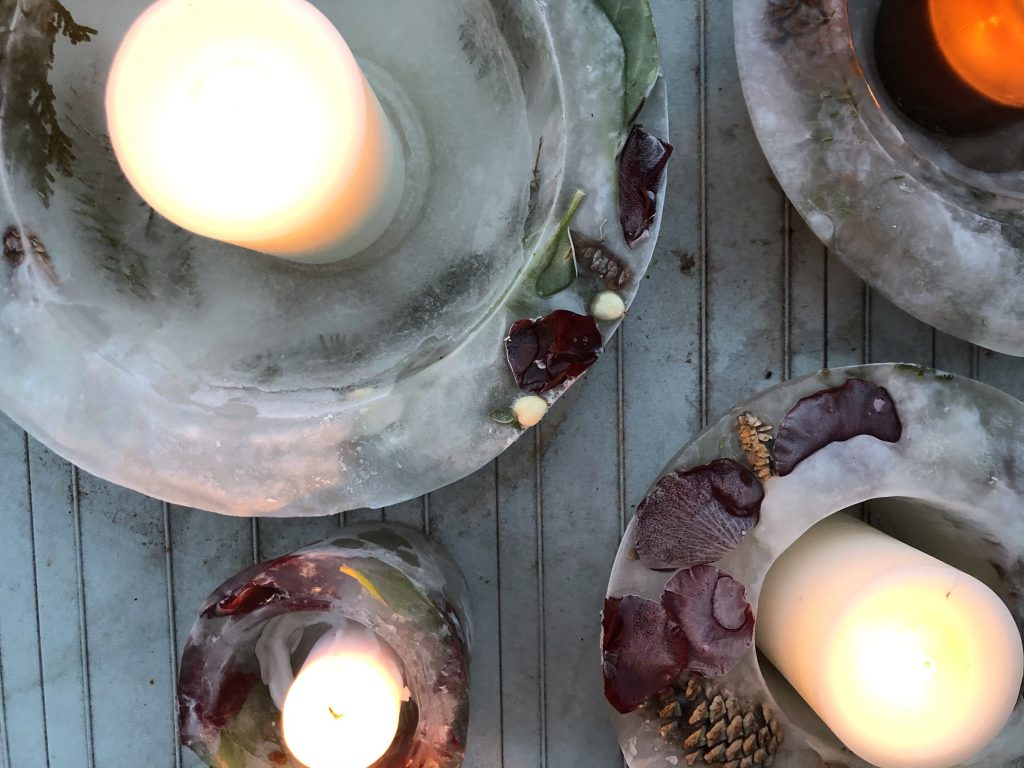
[1] Not to be confused with the now infamous e-cigarettes…
[2] Collegiate duct tape is welcomed!
[3] I recommend using fresh evergreen boughs, pinecones, winter berries, or any other organic materials you can get your hands on. Fresh fruits such as orange slices and red currants are also popular. I encourage you to experiment and get creative: The more diversity of shape, color, and texture the better!
[4] Meaning the last couple days have experienced highs in the forties…
[5] Who would have thunk it?!
[6] Remember to include a water-friendly catchall container for when your lantern begins to melt!

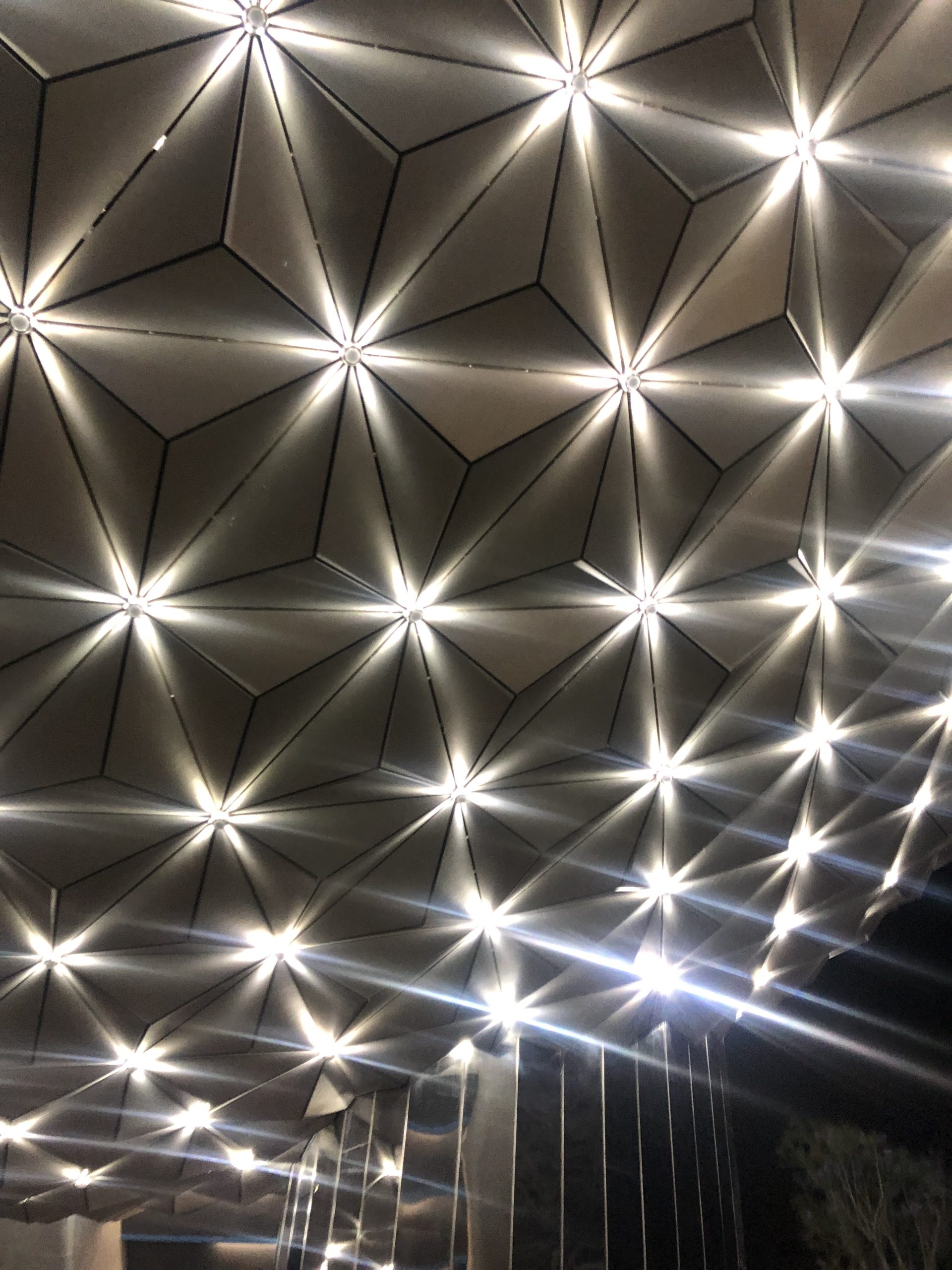

Comments are closed.